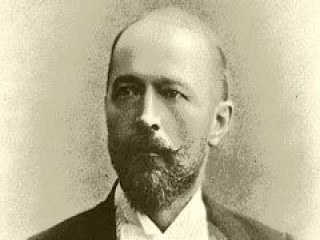
Emil Adolph Von Behring biography
Date of birth : 1854-03-15
Date of death : 1917-03-31
Birthplace : Forsthausen, West Prussia
Nationality : German
Category : Science and Technology
Last modified : 2011-04-03
Credited as : Physician and hygienist, Nobel Prize in Physiology or Medicine, diphtheria treatment
The German hygienist and physician Emil Adolph von Behring is famous for his discovery of antitoxins and his pioneering work in the treatment of diphtheria and certain other diseases.
Emil Adolph von Behring was born on March 15, 1854, at Forsthausen, West Prussia. After training at the University of Berlin and passing the state medical examination in 1880, he entered the army medical service. While in the service, he worked for a time with K. Binz, pharmacologist and chemist, on iodoform, a chemical homolog of chloroform, which was then considered highly effective as a dusting powder for the treatment of deep ulcers. In 1889 he joined the staff of the Robert Koch Institute of Hygiene in Berlin, and it was there that his outstanding contributions were produced.
When Behring began his experiments, the germ theory of disease was becoming well established and immunology was a rapidly developing discipline. In Koch's laboratory Behring worked with the eminent Japanese bacteriologist S. Kitasato. In 1890 Behring presented two papers, one with Kitasato, discussing the immunity of animals to diphtheria and tetanus. They demonstrated that certain substances (antitoxins) in the blood serum of both humans and animals who had recovered from the disease, either spontaneously or by treatment, showed preventive and curative properties. Animals injected with this immune blood were shown to be resistant to fatal doses of bacteria or toxin. Further, animals treated with the serum after contracting the disease could be cured.
For prophylactic immunization against diphtheria, Behring suggested the injection of a mixture of toxin and antitoxin. This method, the forerunner of modern disease prevention, became practicable when certain reagents, for example, formaldehyde, were added to the mixture to produce a "toxoid"; the reagents preserved the immunizing property of the mixture while removing its poisonous characters.
For these advances in serum therapeutics, Behring received the Nobel Prize in 1881, being the first medical man so honored; he was also created privy councilor with the title of Excellenz and received many distinctions and prizes. For the discovery of antitoxins and the development of vaccinations, Behring was honored with the epithet "Children Savior." When he contracted pneumonia, he was already in
a weakened state of health and was unable to withstand the strain. He died in Marburg on March 31, 1917.
















